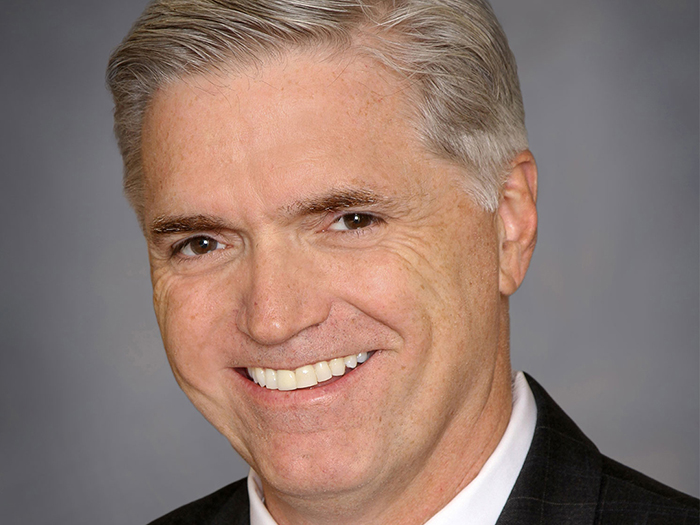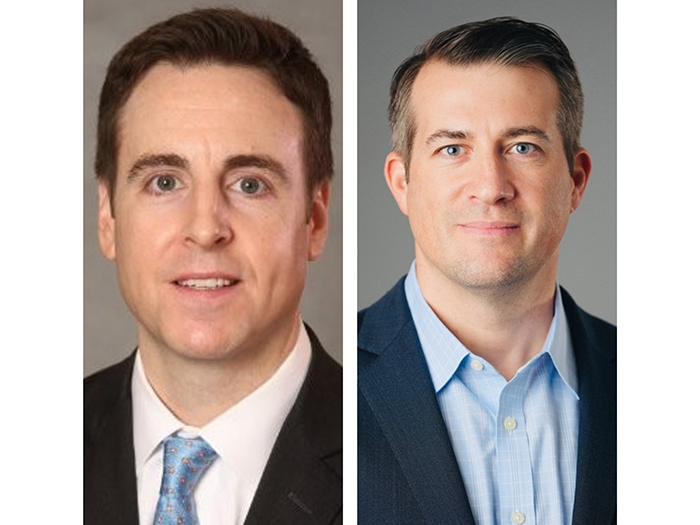Claims Management
Best Practices a Moving Target

Although modern claims management technology can capture all manner of information to identify where employers and carriers spend — and misspend — their insurance money, a third-party administrator’s (TPA) success in managing an insurance program depends on the underlying human intelligence and a disciplined application of its own best practices.
However, universally applicable “best practices” resist codification because too many variables contribute to how a claim should be handled, including local laws, industry, line of insurance, and the size of the client company, said Randy Jouben, risk manager, Five Guys Enterprises, LLC in Virginia and a member of the Risk Management & Insurance Society (RIMS) Standards & Practices Committee.
Instead, companies develop internal best practices based on their own closely observed and analyzed experience, and some share their findings with each other, said Janet Warren, managing director, Beecher Carlson.
These best practices are customized to the client’s sophistication, needs, industry and internal staffing.
The principles underlying all modern best practices emerged from the financial stewardship and speedy communications principles codified in the Unfair Claims Settlement Practices Act of 1997, Jouben said. Created by the National Association of Insurance Commissioners, the act provides guidance to states wishing to protect consumers and regulate insurance carriers. These best practices include timely communications, responsible stewardship of the client’s money, and fair and speedy settlement.
Philosophies Must Align
Jouben regards openness and honesty as qualitative best practices. “Things go wrong in claims. Don’t cover up those mistakes.” Instead, he said, “work together to seek resolution instead of crucifying the person who made the error.”
The relationship breaks down when the TPA and client don’t have equal expectations. “You need specific, realistic expectations on both sides for it to work,” he said.
Consistent engagement in and monitoring of a TPA is a client’s chief best practice, said Frank Ramsay, Towers Watson senior consultant and head of its claims management practice.
He recalled a client with a bafflingly high legal spend. “We visited the TPA, and within a few minutes of walking in the door, we learned that this TPA’s claims philosophy was to litigate everything.”
His client hadn’t been aware of this approach, which differed sharply from its own.
“First, there was a basic breakdown in communication,” Ramsay said, “and second, nobody at the client’s organization monitored and oversaw the TPA.”
Critical Judgment is Vital
Settlement authority requires complete accord between TPA and client. The threshold depends on the level of trust in the relationship, Warren said. “After the TPA establishes credibility, the client raises settlement authority as the relationship matures.”
Even then, appropriate authority is nuanced, subject to the types of claim and other factors. A TPA administering product liability claims might have lower settlement authority than, say, workers’ compensation, because the client’s brand is at stake, Warren said. In workers’ compensation claims, where the jurisdiction defines rules and regulations more clearly, the TPA might have higher settlement authority.
And still the claims adjuster makes judgment calls. “Administering the claims properly requires critical thinking skills and all the knowledge and experience the adjuster brings to the relationship,” Warren said. “One little piece of fact can change the complexion of the case and the adjuster’s decision about its disposition.”
Rob Blasio, president and chief executive officer of Western Litigation Inc., a professional liability claims and risk management company, agreed that appropriate settlement authority practices depend on the TPA’s relationship with the client and especially their line of business.
In workers’ compensation cases, he said, a TPA’s settlement authority is “prudent” for the sake of expedience, but his company generally has no settlement authority at all, which is appropriate for the health care professional liability claims he handles. Instead, he recommends settlement amounts to his sophisticated, high-end clients, who give settlement authority accordingly. In the final reckoning, he said, “collaboration and communication are the best practices.”
Tom Doney, president, Cypress Benefit Administrators, said his role as TPA shifted from the traditional claims payment to medical risk management as health care costs soared.
“When it’s our job to pay a claim, we ask, ‘Does this claim make sense? Is the billing appropriate?’ There’s a lot of fraud out there.” — Tom Doney, president, Cypress Benefit Administrators
His assignment is clear: Save money for the self-funded benefit plans his company administers. “As the cost of doing nothing continues to rise,” he said, he focuses on cost savings such as employee wellness programs that reduce total health care expenses, and identifying claims that shouldn’t be paid.
“If the inevitable happens and employees need care, we give them tools to make decisions about who they see, what type of procedures they may undergo and why,” Doney said. “When it’s our job to pay a claim, we ask, ‘Does this claim make sense? Is the billing appropriate?’ There’s a lot of fraud out there.”
Doney credits the industry’s attention to cost controls with the success of the TPA business and the reason self-funding is now the dominant method of administering employee benefits. The Henry J. Kaiser Family Foundation study, “2013 Employer Health Benefits Survey,” reported 16 percent of covered workers at small firms and 83 percent at larger firms are enrolled in plans that are either partially or completely self-funded.
Cost savings is not always her clients’ primary goal, said Michele Tucker, vice president, claims, for CorVel, a national risk management provider for workers’ comp, health care liability and auto claims. One client’s goal could be service-related results, while another may focus on something completely different.
For example, best practices for a transportation company’s claims-management program would look very different from that of a retailer.
The transportation company has staff in the field, not in shopping malls, and it needs immediate access to a claims -eporting mechanism in its unpredictable, fluid work environments.
“That means a mobile application from which they can call in a claim and get access to immediate care,” Tucker said.
After an accident, the TPA would arrange immediate medical care to address the injury component and the liability insurance claims team to take care of property damage and any subrogation or recovery.
In the retail environment, on the other hand, injuries are fewer and less severe, but customer-related claims — which back into product and general liability cases, which themselves may by derived from chain-of-production issues — are more frequent.
Both involve multi-line claims management, which blurs both insurance and responsibility lines. These blurred lines demand informed, experienced humans.
“At implementation, the client and TPA need to decide how they’ll partner when workers’ compensation and liability lines run into each other,” Tucker said. “You need subject experts in these completely different subjects to get the best results.”
Analyze That!
Analytics are not just a powerful reporting tool, said Tucker, but a powerful diagnostic and prescriptive tool as well. Her company has a simple best practice regarding analytics: Use them.
“Things go wrong in claims. Don’t cover up those mistakes. … Work together to seek resolution instead of crucifying the person who made the error.”
— Randy Jouben, risk manager, Five Guys Enterprises LLC
When CorVel saw a spike in claims for one of its retail clients, Tucker said, it analyzed data and found that the claims originated with employees who had been injured while handling a new clothing rack. The client phased out the rack. CorVel also uses analytics as a predictor of “creeping catastrophic” claims — the kinds that can go nuclear unless managed swiftly — with its pharma clients.
“TPAs and their clients can gain insights from data and predictive modeling to drive better decisions and actions,” said Kirsten Hernan, director, Deloitte Consulting LLP. “For example, when you see a potentially troublesome claim, you can escalate it to a more experienced adjuster,” who may be able to snuff out the fire before it starts.
TPAs can capture and report all kinds of data, said Kevin Grady, managing director of Beecher Carlson’s “ZOOM,” a data disaggregation process that allows a company to focus on strategies to reduce costs.
But data alone doesn’t solve problems, he said. “How you use it creates value.”
Grady described the process of turning a practical problem into a statistical problem, then turning a statistical solution — a goal — into a practical solution.
For example, he said, say the TPA traces a cost increase to injured workers bringing suit, which are expensive because of attorney and court costs. “That’s the practical problem,” he said.
Next, he’d convert the data to a rate. If 30 percent of claims were litigated last year, say, the company would target only 20 percent this year. “That’s the statistical solution.”
To achieve that, he’d ask, Where were the lawsuits coming from? The Northeast? Southeast? Midwest? “The location becomes the statistical problem.”
Then Grady sets the goal — the statistical solution. “If suits were clustered in the Southeast, we’d ask, ‘How effective is our response to claims in the Southeast? Are we reporting late?’ ”
When claims are reported late, injured workers get nervous, he said. “They worry about how they’ll feed their kids, so they get attorneys,” whereas they tend not to if the company approaches them promptly with a robust injury response process that responds in a timely manner, informs workers of their rights, establishes a path to recovery and maintains communications.
Thus armed with information, the TPA can help the client reduce injuries, claims and litigation. But not every problem is equally worth solving, Grady said. By analyzing claims data, employers and TPAs can prioritize the problems. “You know which to go after first.” The same applies to claims. “You go after the 20 percent of conditions that drive 80 percent of claims.”
Aim for Avoidance
Avoiding litigation is the best practice to manage litigation, said Beecher Carlson’s Warren. “Better yet, avoid the claim in the first place and you avoid the litigation too.”
In fact, said CorVel’s Tucker, workplaces are becoming safer, thanks in part to analytics that inform employers where to apply fixes.
When accidents occur anyway, Warren said, the decision whether or not to litigate depends on the facts of case, and every case must adhere to the Fair Claims Practice Act.
Closing cases proactively is the best policy for cost control, said Blasio of Western Litigation.
“Evaluate cases quickly, make decisions about whether they need to be resolved and close them expeditiously to reduce allocated losses and adjustment expenses on your files.”
Short of that, have vetted litigation guidelines that outline and control relationships with outside attorneys and experts called in to defend cases.
“It’s about managing expectations at the outset,” said Blasio. This could mean demanding a budget from attorneys and “holding their feet to the fire” about sticking to it.
Cyber security breaches among retailers, health care companies and governments have become the stuff of tabloids and courtrooms. To a large extent, they’re also avoidable.
“The organizations that succeed are those that take cyber security seriously.” — Marty Frappolli, senior director of knowledge resources, The Institutes
“Companies can hire experts to make their data securely available to those who need it and inaccessible to everyone else,” said Marty Frappolli, senior director of knowledge resources for The Institutes, a nonprofit provider of insurance education.
“The organizations that succeed are those that take cyber security seriously. The value of the data far exceeds the cost of protecting it, so take preventive steps first and buy cyber security insurance as a backup plan.”
Clients and TPAs also should be willing to bring in outside help, especially on complex, high-exposure cases, Blasio said. These could include jury consultants and structured settlement specialists. “If there are other experts in the industry who can help strategize how to get the case in the best position for resolution, an existing relationship with a TPA or counsel shouldn’t preclude another.”
This best practice applies most to self-administered plans. “They spend hundreds of thousands of dollars retaining medical experts, but they rarely think about calling an expert who might have resolved 20 cases with the plaintiff’s attorney and can cut through the noise.”
______________________________________________________
Read our three-part claims management series, which focuses on third-party administrators:
 Part I: A Marriage of Compatibility
Part I: A Marriage of Compatibility
Employers must select the TPA best equipped to manage employees’ health and well-being.
 Part II: Best Practices a Moving Target
Part II: Best Practices a Moving Target
The best claims-handling practices depend on hiring good people.
 Part III: Measuring the Unmeasurable
Part III: Measuring the Unmeasurable
Often it’s the intangibles that can make or break the payer-TPA relationship.










